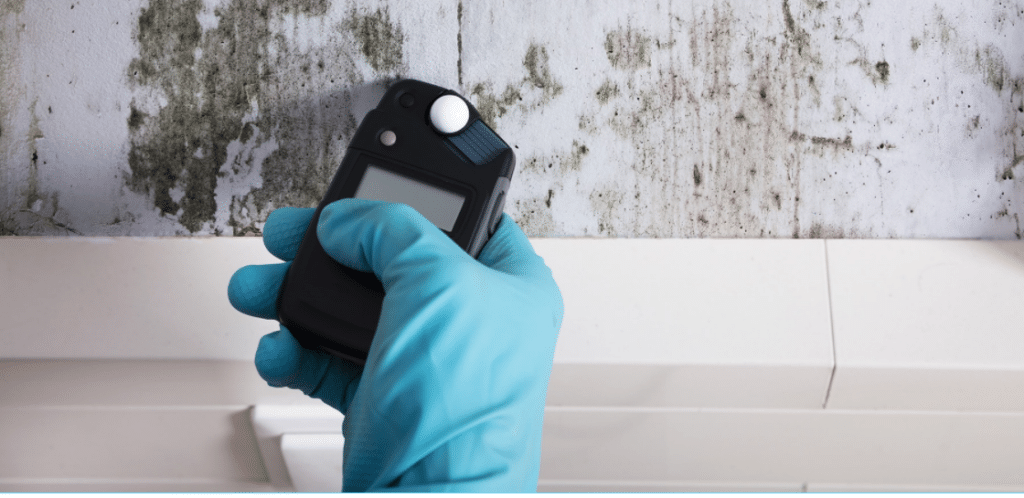Accessing Regional Post Remediation Mold Testing Near Me
Accessing Regional Post Remediation Mold Testing Near Me
Blog Article
Your Ultimate Guide to Post Mold Remediation Techniques
Navigating the world of post-mold remediation techniques is a careful process that requires interest to detail and a thorough understanding of the details included. In the aftermath of mold problem, understanding how to successfully get rid of the mold and mildew and stop its reoccurrence is vital for preserving a healthy and balanced interior setting. From selecting the right cleansing and decontaminating techniques to applying strategies for long-lasting mold prevention, each action in the remediation trip plays a critical duty in making certain an effective result. As we start this expedition of post-mold remediation strategies, we will discover the vital approaches and finest practices that can help you restore your area to its pre-mold condition and safeguard it versus future mold threats.
Recognizing Post-Mold Remediation Process
After finishing the mold and mildew remediation procedure, it is essential to understand the post-mold removal techniques that are essential to ensure a effective and extensive clean-up. When the mold has actually been eliminated, the following step entails cleaning and decontaminating the affected locations to avoid any kind of regrowth of mold.
In addition, conducting a last inspection post-remediation is crucial to ensure that all mold has actually been successfully removed. This inspection must involve a detailed visual check along with possibly air sampling to validate the absence of mold and mildew spores in the air. If the examination reveals any type of sticking around mold, additional remediation might be essential. Finally, enlightening occupants on safety nets such as controlling wetness degrees and quickly attending to any kind of water leaks can assist preserve a mold-free setting.
Effective Cleaning and Decontaminating Approaches

Preventing Future Mold Development

Relevance of Correct Ventilation
Proper air flow plays a vital duty in avoiding wetness buildup, a vital consider mold and mildew development within interior atmospheres. Reliable air flow systems help eliminate excess humidity from the air, reducing the opportunities of mold and mildew spores finding the dampness they need to germinate and spread out. Without ample air flow, indoor areas can become a reproduction ground for mold and mildew, causing official site possible health risks and structural damage.
By guaranteeing correct air circulation, air flow systems can also help in drying moist areas a lot more quickly after water damage or flooding occurrences, better hindering mold growth. After mold remediation. In spaces like bathrooms, kitchen areas, attic rooms, and cellars where wetness degrees often tend to be greater, setting up and preserving reliable ventilation systems is critical in protecting against mold problems

Monitoring and Upkeep Tips
Given the vital duty that proper ventilation plays in preventing mold and mildew growth, it is important to develop efficient monitoring and upkeep pointers to guarantee the ongoing performance of air flow systems. Regular assessments of ventilation systems need to be performed to check for any indications of blockages, leakages, or breakdowns that can hinder correct air flow. Tracking moisture degrees within the property is also essential, as high humidity can add to mold and mildew growth. Installing a hygrometer can aid track humidity degrees and alert house owners to any type of spikes that may need attention. Additionally, making sure that air filters are on a regular basis cleaned or changed is crucial for maintaining the efficiency of the air flow system. Executing a schedule for routine maintenance tasks, such as air duct cleaning and HVAC system assessments, can help stop problems before they rise. By staying alert and positive to the condition of ventilation systems, residential property proprietors can effectively alleviate the risk of mold regrowth and keep a healthy interior setting.
Conclusion
In verdict, post-mold removal strategies are crucial for guaranteeing a tidy and safe atmosphere. Recognizing the process, implementing efficient cleaning and disinfecting approaches, preventing future mold growth, keeping appropriate ventilation, and regular tracking are all vital action in the remediation procedure. By complying with these guidelines, you can effectively get rid of mold and mildew and avoid its return, functioning or promoting a healthy and balanced living area for all occupants.
In the results of mold problem, recognizing how to properly eliminate the mold and avoid its reoccurrence is extremely important for keeping a healthy indoor atmosphere. As soon as the mold my sources and mildew has actually been eliminated, the following step entails cleaning and decontaminating the affected locations to prevent any type of regrowth of mold and mildew - After mold remediation. After eliminating noticeable mold development, it is important to clean up all surfaces in the affected area to get rid of any remaining mold spores. To even more improve mold and mildew prevention measures, it is important to deal with underlying concerns that initially led this page to mold advancement.Offered the vital duty that proper ventilation plays in preventing mold growth, it is vital to develop effective tracking and upkeep pointers to ensure the continued capability of air flow systems
Report this page